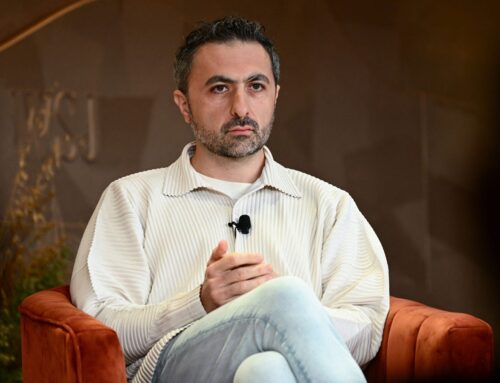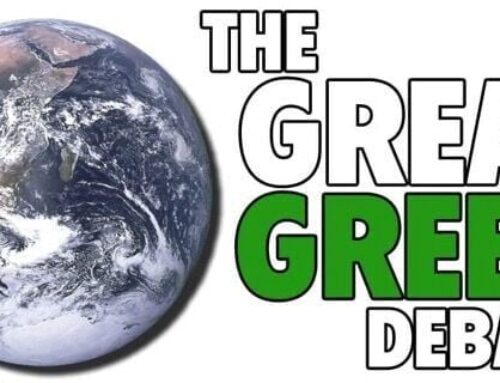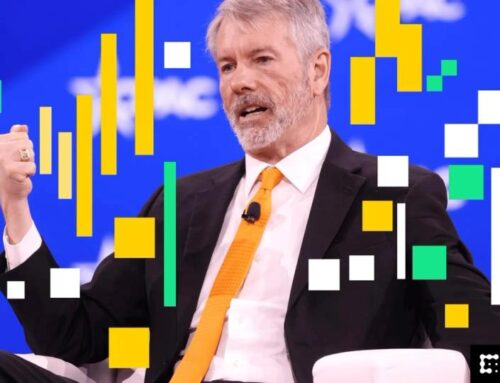“An Invitation to Connect More Deeply with Our Environment, Ourselves, and Our Collective
April 28, 2025
 River of Grass
River of Grass“Nature will always win in the end,” notes Native American environmental activist Betty Osceola, one of several intriguing characters, human and not, that star in River of Grass, Sasha Wortzel’s highly personal love letter to a region both she and the Miccosukee tribal member call home. In fact, Osceola, a fiery grandmother, has dedicated her entire life to protecting her family — the Everglades itself. (Another thoughtful protagonist, a Miccosukee environmentalist and poet, likewise refers to his tropical surroundings as relatives, adding that “Chosen family is a survival strategy.”) As the strong-willed Osceola sees it, the question is really, “Do we want to win with her?”
This would, of course, necessitate us realizing that we are indeed a part of nature, acting as a self-destructive force; a wakeup call first issued to Florida’s white settlers (and tourists) by one of their own nearly 80 years ago. Back in 1947 Marjory Stoneman Douglas published the surprise bestseller The Everglades: River of Grass, and it is through this book’s pioneering lens that Wortzel has chosen to tackle the existential topic of our times. Sort of.
Because Wortzel is an artist in her own right, she’s taken the words of the conservationist author (who arguably instigated the project by appearing to the director in a dream) and threaded them with her own narration, along with Osceola’s deep insights. Then wedded the voiceover to poetic imagery that features arresting archival footage, including of a sharp-witted (and tongued) nonagenarian Stoneman Douglas, as well as contemporary verité that takes pains to give equal weight to all residents of the “swamp.” For in Wortzel’s cinematic Everglades, humans are merely one fleeting creature in a far more complex ecosystem, a world where birds, reptiles, plants and water are there to show us the care-taking way. If we choose to stop, look and listen.
A few weeks prior to the picture’s international Hot Docs premiere on April 28th (almost exactly two months after its True/False world premiere), Filmmaker reached out to the director-producer-editor and interdisciplinary artist, whose companion video and series of lightbox film stills will be on display at The International Center for Photography through the beginning of May. (ICP also is showing the film on May 4.)
Filmmaker: You started developing this project during your 2017 artist residency in the Everglades National Park, the region of Florida where you were born and raised. Which made me wonder how working on this film might have changed, or perhaps crystallized, your own POV towards your home state. What did you learn about both its beauty and its legacy of manmade destruction? How does this connect to our country and the wider world?
Wortzel: This project began in the wake of a hurricane and devastating fish kills on our coasts. I wanted to understand how we got here, so I applied to AIRIE (Artists in Residence in Everglades) with the aim to do initial research for a film about the Florida Everglades; and I began reading The Everglades: River of Grass by Marjory Stoneman Douglas, a 1947 nonfiction book that today is still considered the resource guide to the Florida Everglades. I was struck by how little I had been taught about the histories and ecologies of the region, particularly Florida’s Indigenous history and rich legacy of resistance. I was also struck by how little the average Floridian knows about the Everglades, and by how few had actually spent time in the ecosystem.
Florida is both reviled and desired in the American imagination. In the media, the state is frequently flattened into two tropes: a vacation playground through the lens of Disney World and our coastal beaches, or a quirky, outlandish place, where Florida Man is the butt of the joke. What I found in making this film is that Florida is simply a microcosm for this country, and in fact it has often been an experimental testing ground for ideas that are exported across the United States. To tell the story of the Everglades – their beauty and abundance, colonization, and human-made and accelerated destruction – speaks more broadly to the very origin story and larger project of the United States. While the film is a very close look at a particular region on the southern tip of Florida, the impacts of reengineering and destroying our wetlands is global, and the climate emergency is affecting us all.
Filmmaker: Because Marjory Stoneman Douglas inspired the doc, and indeed even came to you in a post-hurricane dream, it’s unsurprising she serves as a main protagonist. But how did you find all your contemporary characters and ultimately choose who to include?
Wortzel: It was through reading Douglas’s book, following the flow of water and conducting initial broad research during my residency in the Everglades National Park that I began to identify a series of locations and themes I wanted to explore in the film. From there I went about finding participants rooted in each of these distinct areas, sometimes by reaching out through a cold call and setting up a visit; or other times being introduced by another participant in the film, joining environmental actions on the ground, or by simply drawing upon relationships I already had from growing up in the region. For example, the wildlife clinic in the film is a place where I volunteered in middle school.
During my residency in the national park, I reached out to Miccosukee environmentalist Betty Osceola and spent an afternoon with her and her late husband Jimmie on their airboat. She told me she was planning a prayer walk that would involve walking the entire circumference of Lake Okeechobee – 118 miles in seven days – and invited me to join.
Finding the structure of the film in the edit, particularly through the durational acts of walking with Betty through the ecosystem and reading Douglas’s book, which moves through so many layers of history, helped to inform which characters would ultimately be included. And then when a Category 5 hurricane hit my hometown in 2022, it became clear that I would include my own voice and perspective as a container to hold all these seemingly disparate yet inextricably linked parts.
Filmmaker: I’m very curious about the film’s structure, specifically the intertwined voices that serve as our guides, and the decision to give nearly equal screen time to all the “interdependent communities,” from water and plants, to reptiles and humans. Was this always the original idea, or did you discover it in the edit?
Wortzel: The Everglades are a network of interdependent ecosystems connected by water. I wanted the structure of the film itself to reflect this type of horizontal web, similar to the rhizomatic mangrove forests that buffer the coasts of the Everglades. I was also very moved by Betty’s Miccosukee teachings of land as relative and ancestor, and by Douglas’s intentional use of the plural non-binary pronoun “they” for the Everglades, binding “them” to expansive notions of kinship between people, animals, plants, and the unknown.
The intention was there, but finding the structure was quite challenging. It was a particularly long edit and one that involved a lot of creative exploration and trial and error. First I worked closely with editor Rebecca Adorno-Dávila to cut the vérité material into discrete scenes and build sections with narrated passages from Douglas’s book. Once we had an initial assembly, it became clear that the film needed a container to bring cohesion to all the many parts. Both Rebecca and our producer Danielle Varga encouraged me to bring my personal voice and perspective to the film. Frankly, I resisted it for a long time. Yet ultimately I realized it was necessary and that being vulnerable could be an invitation for others to be vulnerable with me.
After Hurricane Ian upended my life for awhile, I wrote all my narration and took on the edit myself, cutting in close consultation with consulting editors Maya Hawke and Todd Chandler, eventually arriving at the structure you see now.
Filmmaker: Could you talk a bit about the accompanying video and series of lightbox film stills that are currently on exhibit at ICP? How did that come about? Are you planning other exhibitions in conjunction with upcoming screenings?
Wortzel: The project on view at ICP grew out of conversations I had over many years during the making of River of Grass with one of the exhibition’s curators, Elisbeth Sherman; she ultimately invited me to participate in the exhibition. I often work in iterations, collecting and editing my material for presentation in a cinema, and into expanded forms for the gallery and site-specific locations. While I’m very invested in the experience and tradition of communal cinema, I’m also excited by the expanded possibilities that emerge from reconfiguring elements of cinema for a space, and how these two modes of working inform one another. Many of the images and sounds that ultimately became part of the film were first created for a sound installation and series of sculptures called Dreams of Unknown Islands, curated by Kristan Kennedy and Stephanie Snyder, that was first exhibited on Miami Beach and then traveled to Portland and to St Augustine, Florida.
My intention is to exhibit a sibling body of gallery works and objects I’ve made alongside screenings of the film. I’m also developing a live cinematic performance of River of Grass.
Filmmaker: Though River of Grass is an “environmental film” it’s also a personal passion project, which makes me wonder what impact you’re hoping it’ll have and how you’re planning to achieve that.
Wortzel: Making this film helped me to move from a place of grief to embrace a glimmer of hope, a glimmer that does not deny the very real and messy road ahead of us. Betty’s prayer walks brought me into a deeper relationship with the Everglades, as if reconnecting with a distant relative; and spending time with my neighbors in the region brought me into a coalition of people caring for the environment, and by extension each other.
Our team is dreaming up a series of community screenings and events throughout the state of Florida and beyond in partnership with the film’s participants, many of whom are actively engaged in grassroots movement building and environmental organizations. I hope this film is an invitation to connect more deeply with our environment, ourselves, and our collective power.
Search
RECENT PRESS RELEASES
Related Post




